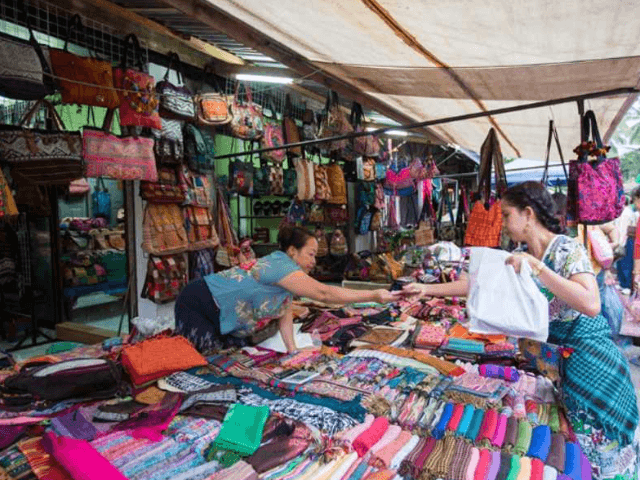Discover the soul of Vietnam’s capital through the Top 8 Authentic Things to Do in Hanoi, where hidden cafes, local markets, traditional arts, and community-led experiences offer an unforgettable glimpse into real Hanoian life—beyond the tourist traps.
TABLE OF CONTENTS
1
Why Choose Authentic Experiences in Hanoi?
Hanoi Beyond- the Tourist Traps
Supporting Local Culture and Communities
How Authentic Travel Creates Lasting Memories
2
1. Savor Egg Coffee at a Hidden Cafe in the Old Quarter
The History Behind Hanoi’s Egg Coffee
Best Local Spots Known to Hanoians
3
2. Take a Morning Walk Around Hoan Kiem Lake with Locals
Experience Hanoi’s Spiritual and Social Heart
Join in Tai Chi or Just People-Watch at Dawn
4
3. Explore a Local Wet Market (Not the Tourist Night Market)
Best Local Markets: Chau Long, Dong Xuan (Back Alleys), and More
What You’ll See, Smell, and Taste - Ethnic and Regional Delights
5
4. Ride a Xe Om (Motorbike Taxi) Through the French Quarter
See the Real Hanoi - Not Just on Foot or in a Bus
Tips for Booking Local Xe Om or Using Grab
6
5. Join a Family-Run Cooking Class in a Hanoian Home
Learn to Cook Bun Cha or Banh Cuon the Traditional Way
Cooking with Locals = Cultural Immersion
7
6. Visit Train Street (Responsibly and Respectfully)
Best Times to Visit Without Disrupting Residents
Understanding the Local Controversy Around Train Street
8
7. Watch a Traditional Ca Tru or Tuong Performance
Hanoi’s Ancient Performing Arts Explained
Where to See Authentic Shows (Not Just Water Puppets)
9
Travel Tips for Enjoying Hanoi Like a Local
Language Tips and Local Etiquette
Apps, Maps, and How to Find Hidden Gems
Staying Safe and Respectful While Exploring
10
Final Thoughts: The Real Hanoi Is Found in Its People
Slow Travel and Deeper Connection in the Capital
Combining Hanoi with Other Authentic Destinations in Vietnam
Why Choose Authentic Experiences in Hanoi?
Hanoi Beyond- the Tourist Traps
Hanoi is a city full of life, history, and soul - and if you're wondering what to explore in Hanoi, know that the real magic isn’t always found in the most popular sightseeing spots. While the Old Quarter and Hoan Kiem Lake are worth visiting, Hanoi’s true charm lies in its narrow alleyways, early morning rituals, and time-honored local customs. Stepping off the typical tourist trail allows you to experience the city through the eyes of those who call it home - revealing a slower, more meaningful side of Vietnam’s capital.

Supporting Local Culture and Communities
Choosing authentic activities doesn’t just benefit travelers - it helps preserve Hanoi’s unique cultural identity. From family-run eateries to community craft workshops, your spending can go directly into the hands of local people. It promotes sustainable tourism, protects traditions like calligraphy or water puppetry, and keeps small businesses thriving in a rapidly modernizing city.
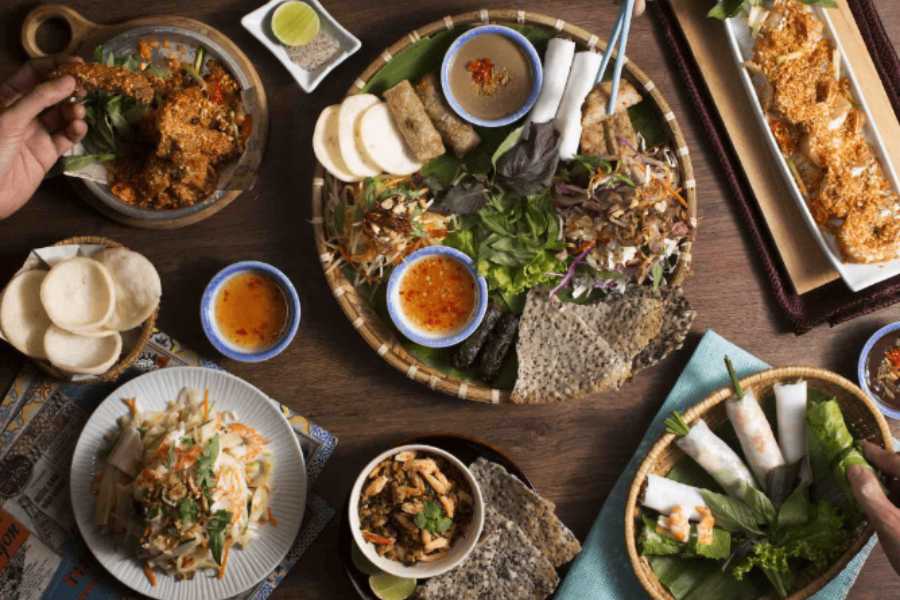
How Authentic Travel Creates Lasting Memories
What makes a trip truly unforgettable? Often, it's not the landmarks themselves but the human connections and unexpected moments - a warm conversation over street food, the sound of morning chants from a temple, or learning to cook a local dish from a grandmother in her courtyard. Authentic experiences slow you down, engage all your senses, and allow you to take home stories that go far beyond your photo album.
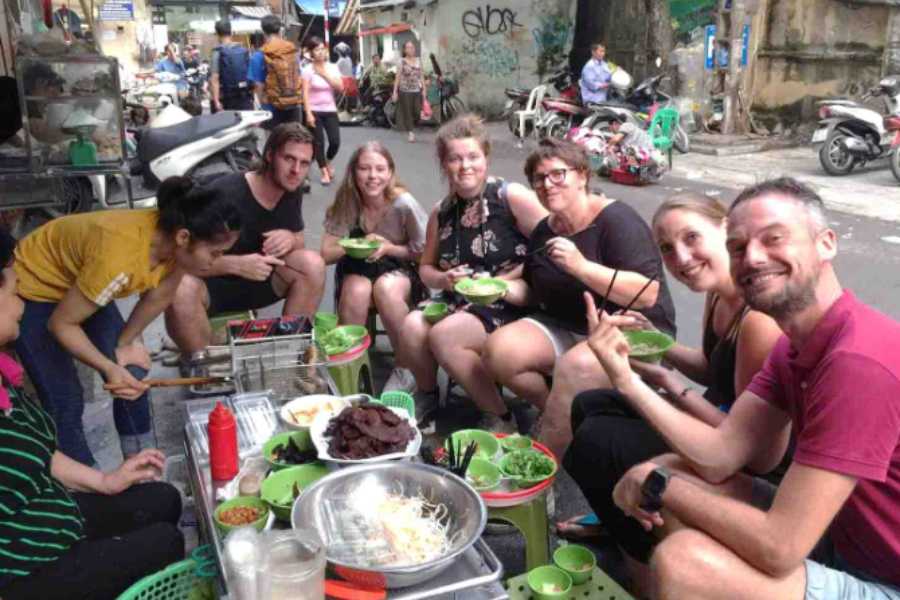
1. Savor Egg Coffee at a Hidden Cafe in the Old Quarter
The History Behind Hanoi’s Egg Coffee
Egg coffee, or ca phe trung, is one of Hanoi’s most iconic drinks - rich, creamy, and surprisingly smooth. It was invented in the 1940s by Mr. Nguyen Van Giang, a bartender at the Metropole Hotel, during a time when milk was scarce. To substitute, he whisked egg yolks with sugar and coffee, creating a velvety froth layered over strong Vietnamese robusta. The drink quickly became a local favorite and remains a symbol of Hanoi’s resourceful spirit.
More than just a beverage, egg coffee represents a slice of wartime history and the creative ingenuity that defines Vietnamese cuisine. Served warm in a small cup nestled inside a bowl of hot water, it’s a treat for both the taste buds and the soul - almost like a liquid dessert with a caffeine kick.

Best Local Spots Known to Hanoians
While many visitors flock to the famous Giang Cafe (run by the inventor’s descendants), locals often prefer lesser-known spots tucked away in the labyrinth of the Old Quarter:
- Cafe Dinh - This cozy second-floor cafe overlooks Hoan Kiem Lake and serves one of the creamiest versions in town.
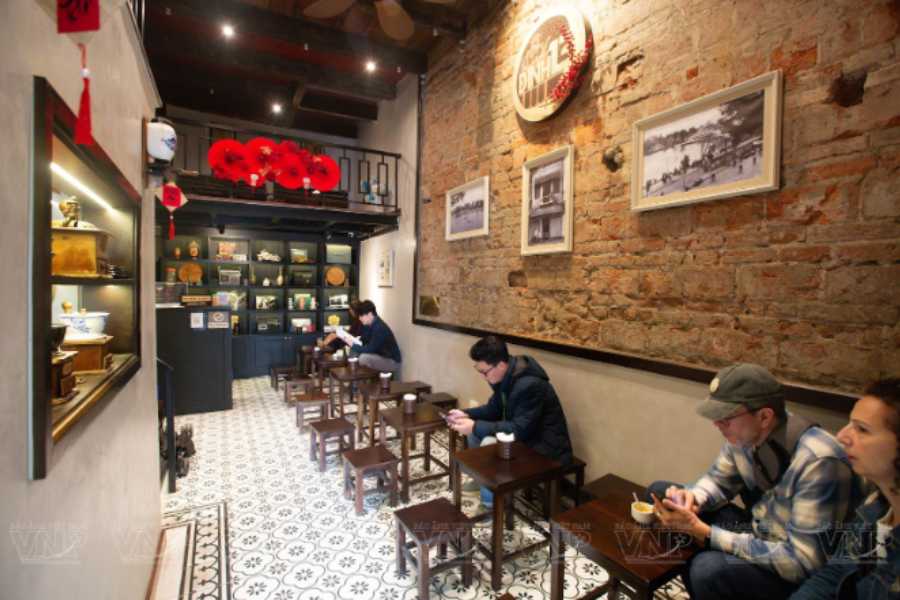
- Loading T Cafe - Hidden in a French colonial building, this gem is known for its cinnamon-spiced twist on the classic egg coffee.
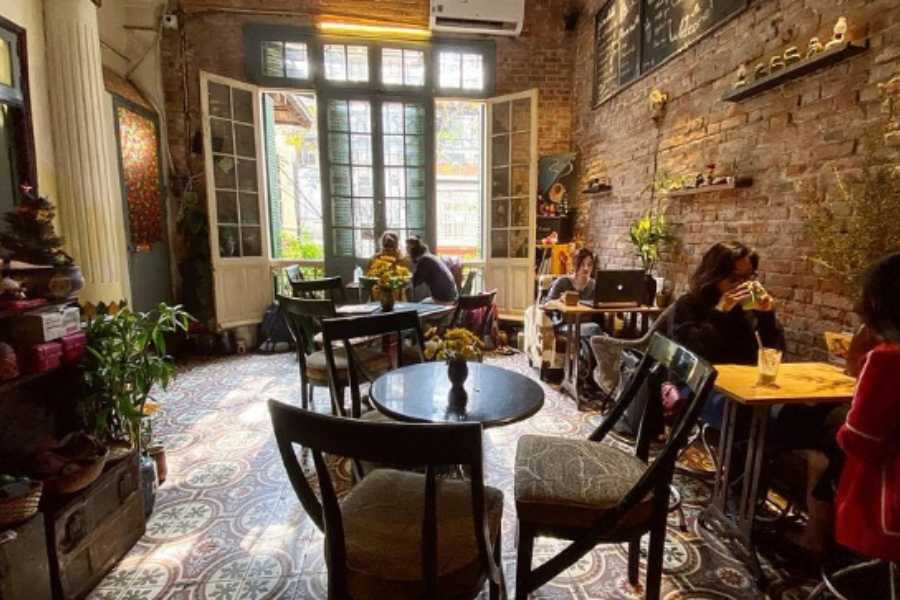
- Cafe Pho Co - Tucked behind a silk shop, it offers stunning rooftop views with your cup - a local secret worth the search.
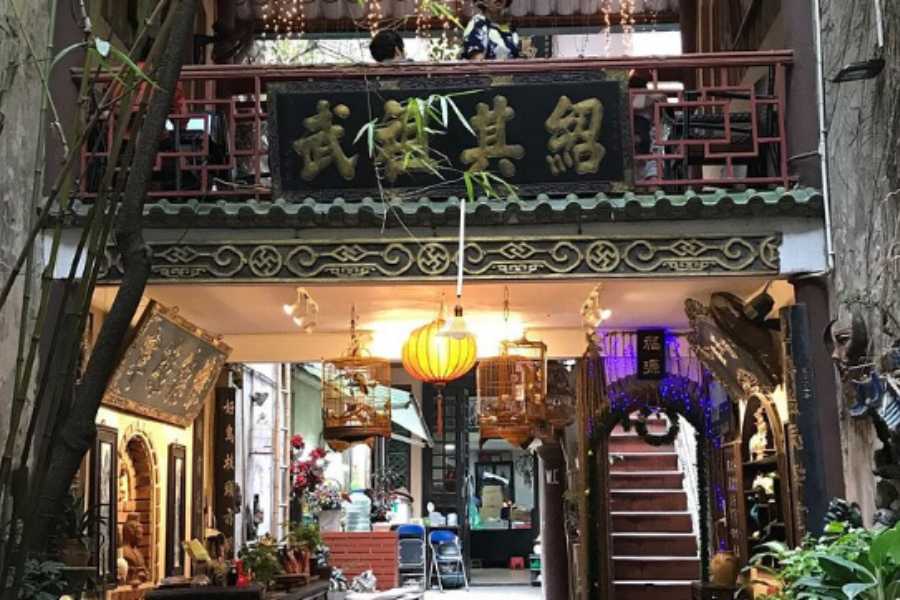
Discovering these cafes often involves walking through narrow alleys, up creaky staircases, or behind market stalls. That journey is part of the charm - a slow, sensory adventure through Hanoi’s cultural and culinary heritage.
2. Take a Morning Walk Around Hoan Kiem Lake with Locals
Experience Hanoi’s Spiritual and Social Heart
Hoan Kiem Lake is more than just a scenic spot in Hanoi’s Old Quarter - it’s the symbolic and spiritual center of the city. Locals gather here every morning at dawn to exercise, meditate, pray, and greet the new day. The peaceful setting - mist rising from the water, soft light glinting off the Turtle Tower, the gentle rustle of trees - offers a serene contrast to the city's usual hustle and bustle.
The lake also holds deep cultural importance. Legend says a golden turtle returned a magical sword to the gods in these waters, ending a war and naming the lake “Hoan Kiem”, meaning “Lake of the Returned Sword”. Today, it remains a place where Hanoians reconnect with tradition and community.
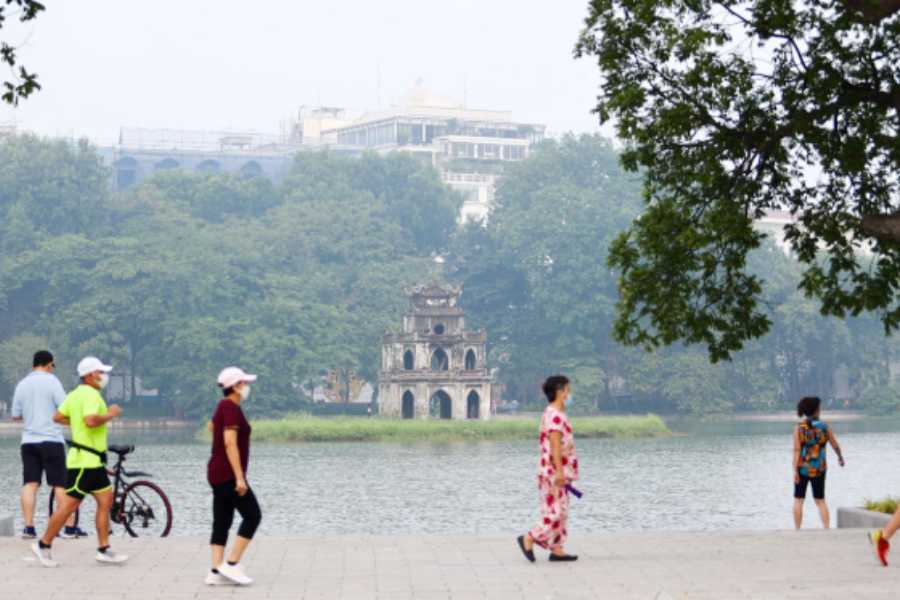
Join in Tai Chi or Just People-Watch at Dawn
Arrive before 7 AM and you’ll see a side of Hanoi that few tourists witness:
- Elderly locals performing graceful Tai Chi movements in silence
- Groups dancing to everything from classical Vietnamese music to K-pop
- Joggers circling the water’s edge, often stopping for stretches or chats
- Devout Buddhists lighting incense near Ngoc Son Temple on Jade Island
You don’t need to participate - simply observing this daily rhythm is a rewarding experience in itself. But if you feel inspired, many locals welcome visitors to join them. A simple nod, a smile, and a willingness to follow along can turn your morning stroll into a shared moment of cultural connection.
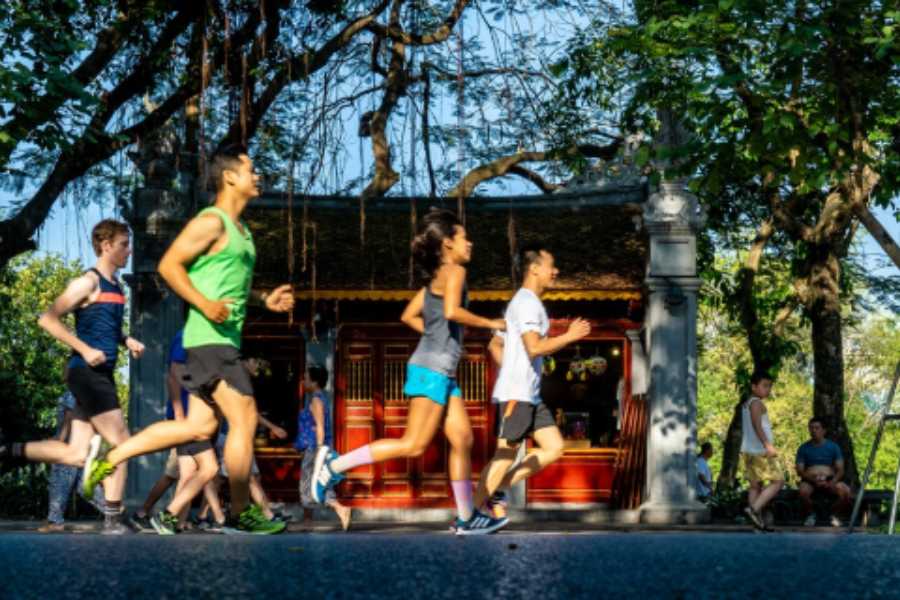
As the sun rises higher and the crowds thin out, grab a seat on a lakeside bench or at a nearby sidewalk café. Sip a coffee, journal your thoughts, and watch Hanoi slowly come alive.
3. Explore a Local Wet Market (Not the Tourist Night Market)
Best Local Markets: Chau Long, Dong Xuan (Back Alleys), and More
Skip the touristy souvenir stalls and dive into the real heart of Hanoi by visiting a local wet market in the early morning. Wet markets are where everyday Hanoians shop for fresh produce, meat, seafood, and herbs. Two of the most authentic are Chau Long Market in Ba Dinh District and the lesser-known back alleys around Dong Xuan Market in the Old Quarter.
- Chau Long Market is especially known for its vibrant range of vegetables and live fish tanks. It also offers insight into traditional medicine stalls and fresh tofu vendors.
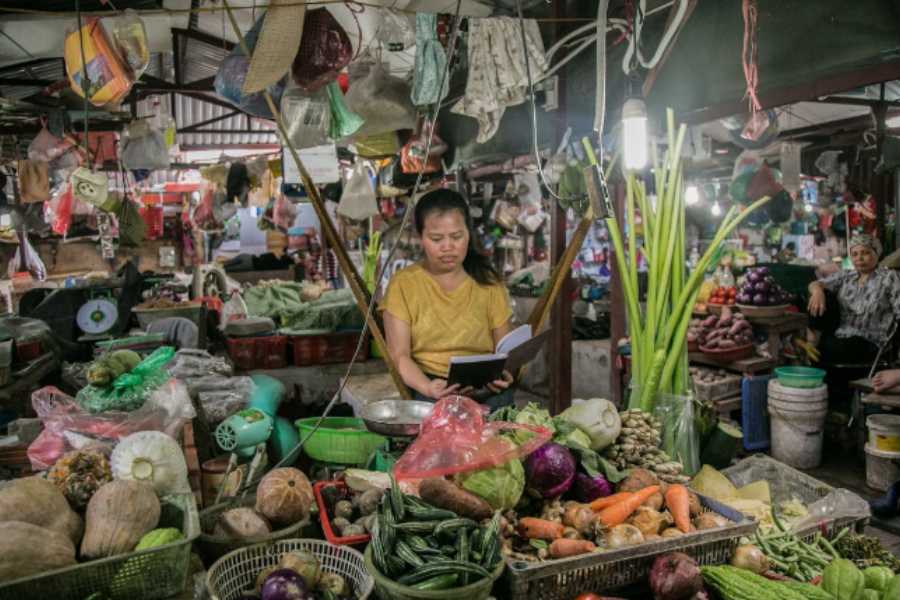
- Dong Xuan’s back alleys are where vendors set up small tables selling everything from mountain herbs to banana flower salads - often for local restaurant chefs.
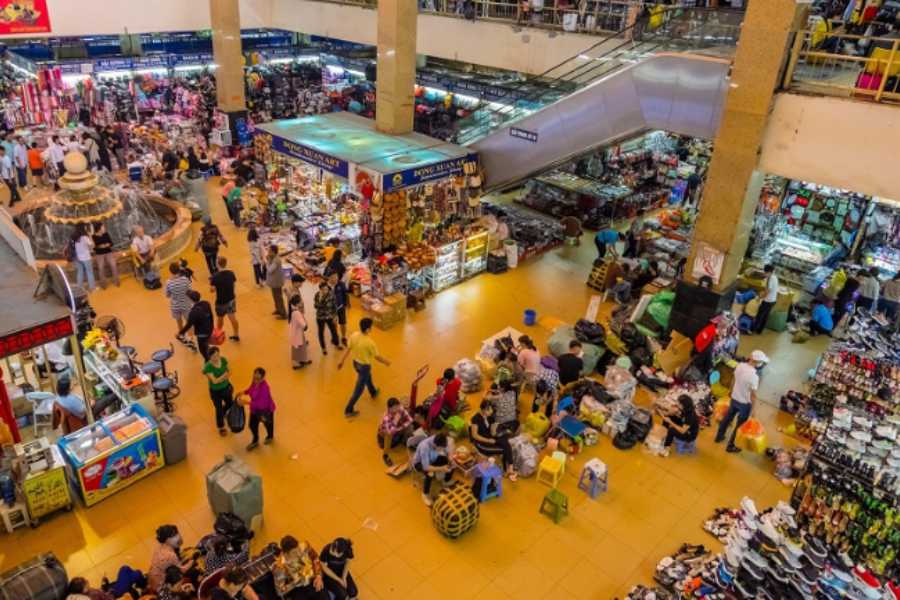
These markets are raw, unfiltered, and full of life - exactly what you want for a genuine cultural encounter.
What You’ll See, Smell, and Taste - Ethnic and Regional Delights
Get ready to engage all five senses:
- Sight: Observe the lively scenes of the market with vendors carefully measuring fresh ingredients on traditional hanging scales and the vibrant colors of local produce on display.
- Sound: Hear the rhythmic slicing of vegetables, the chatter of bargaining, and the clatter of motorbikes weaving between stalls.
- Smell: Inhale the sharp tang of fresh herbs, the rich aroma of grilled pork, and the briny scent of live seafood.
- Taste: Try freshly made nem chua (fermented pork rolls), pickled vegetables, or even a quick bowl of bun rieu (crab noodle soup) served right next to the vendor’s produce – and don’t miss out on sampling traditional vegetarian dishes from Hanoi like stir-fried morning glory or tofu with tomato sauce.
- Touch: Feel the texture of sticky rice or bamboo shoots as you walk past the bins and baskets of local goods.
Visiting a wet market is not just about shopping - it’s about experiencing how people live, eat, and interact every day. Bring small bills, a curious attitude, and don’t be afraid to smile or politely gesture if you can’t speak Vietnamese. Most vendors are used to foreigners and will welcome your respectful interest.
4. Ride a Xe Om (Motorbike Taxi) Through the French Quarter
See the Real Hanoi - Not Just on Foot or in a Bus
Exploring Hanoi on foot gives you details, but hopping on the back of a xe om (motorbike taxi) opens up the city in a whole new way. Nowhere is this more vivid than in the French Quarter, where wide boulevards, colonial villas, and elegant government buildings line the leafy streets.
Exploring Hanoi at night on a xe om reveals a different side of the city, where lantern-lit alleys, buzzing food stalls, and colonial buildings glow under the moonlight. A motorbike ride lets you feel the city’s pulse - the breeze on your face, the hum of scooters, and the smells of sizzling street food wafting through intersections. Unlike buses or taxis, a xe om can weave through traffic, showing you small alleys, hidden cafes, and tree-lined avenues tourists often miss.
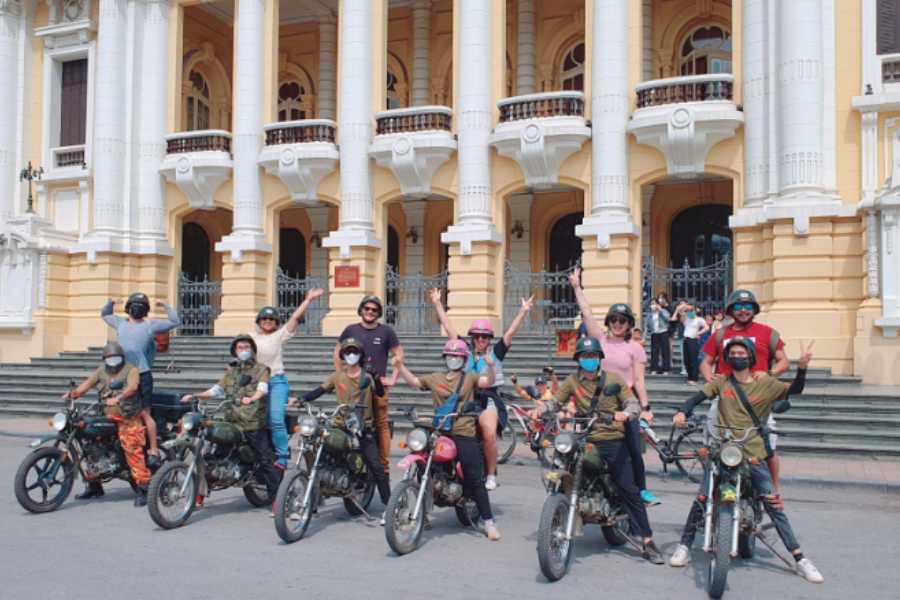
You'll pass landmarks like the Opera House, St. Joseph’s Cathedral, and the Metropole Hotel, but also get glimpses of everyday life - school kids on bikes, vendors balancing baskets, and elderly locals sipping tea on the curb.
Tips for Booking Local Xe Om or Using Grab
-
Traditional Xe Om: These are usually older men waiting at street corners or markets. Agree on a price before the ride. Short trips within the Old Quarter usually cost between 20,000-50,000 VND (under $2 USD). Use basic Vietnamese phrases or hand gestures - they’re used to it.
-
Grab App: Safer for first-timers. Just download Grab, Southeast Asia’s version of Uber. Prices are fixed, and you can choose between a car or a motorbike. It’s often faster than taxis, especially during rush hour.
- Safety First: Always wear a helmet - your driver should provide one. Avoid peak smog times in the afternoon, and bring a mask if you’re sensitive to dust.
A xe om ride in Hanoi isn’t just transportation, it’s a travel experience. You'll feel connected to the rhythm of the city in a way no bus or car can offer.
5. Join a Family-Run Cooking Class in a Hanoian Home
Learn to Cook Bun Cha or Banh Cuon the Traditional Way
For a truly hands-on cultural experience in Hanoi, take part in a family-run cooking class hosted in a local home. Instead of just eating like a local, you’ll learn to cook like one. Two classic dishes often taught are:
- Bun Cha - Grilled pork served with fresh herbs, rice noodles, and a flavorful dipping sauce.
- Banh Cuon - Delicate steamed rice rolls filled with minced pork and mushrooms, topped with crispy shallots.
You’ll typically start with a market visit to pick up fresh ingredients, learning how locals select vegetables, herbs, and spices. Then, you'll head back to the family kitchen, where recipes are passed down through generations.
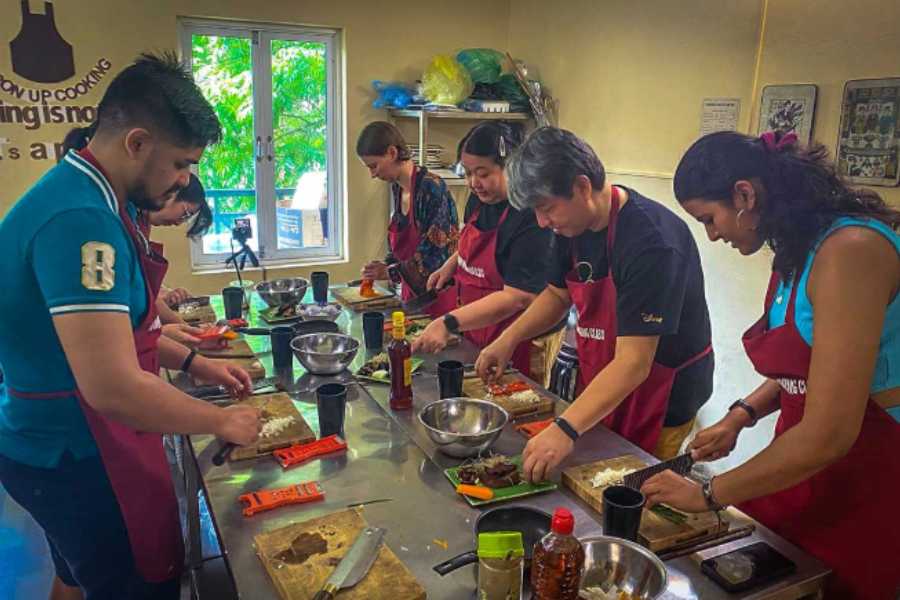
Cooking with Locals = Cultural Immersion
Cooking in a local home goes beyond the food. It gives you a personal window into Vietnamese daily life - how meals are prepared, what stories are shared around the table, and how much pride goes into even the simplest dishes.
- Learn from the source - Your hosts may not be professional chefs, but they cook with authenticity and warmth.
- Enjoy shared meals - After cooking, sit down with the family and enjoy what you've made together. It’s part meal, part conversation, and 100% genuine.
These classes are small, intimate, and rooted in real tradition - a chance to bond with locals and take home more than just a recipe.
6. Visit Train Street (Responsibly and Respectfully)
Best Times to Visit Without Disrupting Residents
Train Street in Hanoi is one of the city’s most striking and Instagram-famous spots - a narrow railway flanked by tightly packed homes and cafes. While it offers a unique glimpse into local life, it’s also a functioning railway and residential area.
Visit during non-peak train hours, such as early mornings or late afternoons, when the area is usually quieter and less crowded. Consider going with a guide or a local host, as some cafes along the street are licensed to provide safe viewing spots - entering through these businesses also supports the local community while keeping you safe. Keep your visit short and mindful by being aware of your surroundings and avoiding blocking entrances or walkways.
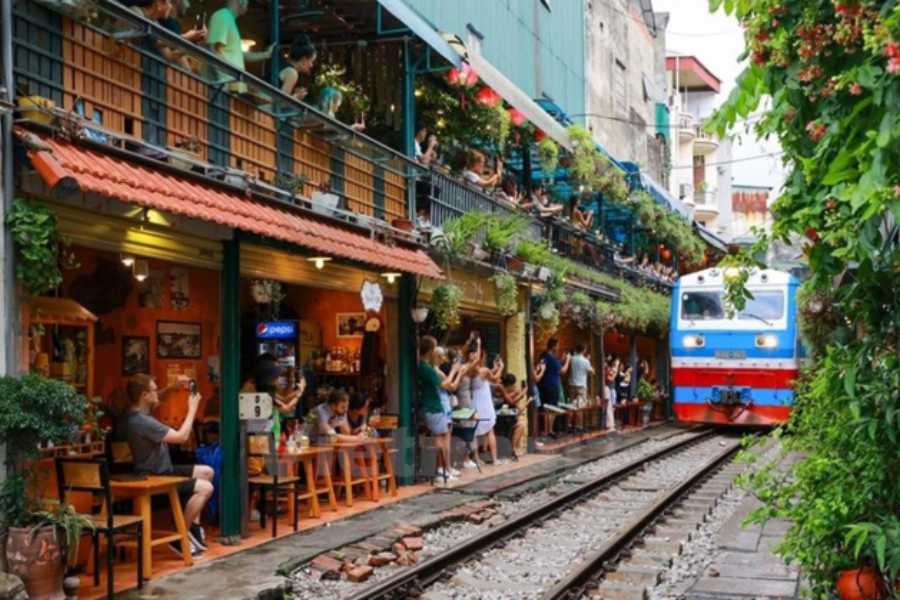
Understanding the Local Controversy Around Train Street
Due to increasing crowds, safety concerns, and disrespectful tourist behavior, authorities have closed off access to some parts of Train Street since 2019. Residents have expressed mixed feelings - some welcome the extra income from tourism, while others are frustrated by noise, disruption, and safety risks.
- This is a real neighborhood, not a theme park - Respect the privacy of the residents and don’t point cameras into homes or climb on structures.
- Support, don’t exploit - If you visit, buy a drink or snack from a local café instead of just snapping photos and leaving.
- Stay alert - Trains still run through the street, and safety must come first.
Train Street is iconic, but being a responsible guest helps ensure it's preserved and appreciated - not overrun or shut down.
7. Watch a Traditional Ca Tru or Tuong Performance
Hanoi’s Ancient Performing Arts Explained
While most visitors know about Hanoi’s famous water puppet shows, few experience the rich depth of Vietnam’s classical performing arts like Ca Tru and Tuong. These art forms date back centuries and reflect the soul of northern Vietnamese culture.
- Ca Tru is a form of ceremonial chamber music that combines delicate vocals, a monochord zither, and rhythmic wooden clappers. Once performed in royal courts, it's now recognized by UNESCO as Intangible Cultural Heritage.

- Tuong, or classical Vietnamese opera, is more theatrical, involving vibrant costumes, dramatic facial makeup, and stylized movements. Its themes range from folklore to moral tales and historical legends.
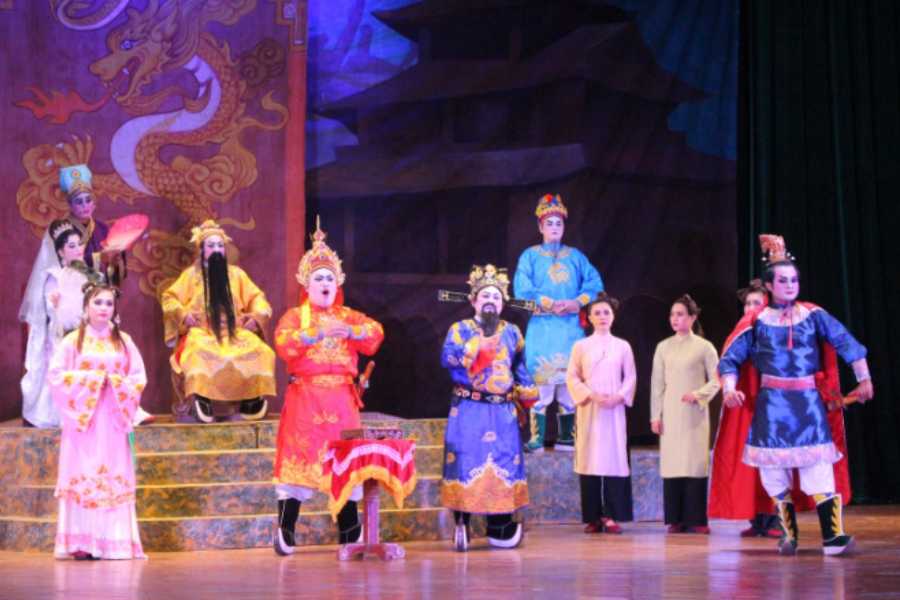
These performances offer a window into Vietnam’s artistic heritage, far removed from commercialized entertainment.
Where to See Authentic Shows (Not Just Water Puppets)
-
Ca Tru Thang Long Club (28 Hang Buom) - An intimate venue in the Old Quarter preserving authentic Ca Tru in its traditional format, run by passionate local artists.
- Vietnam Tuong Theater (51 Duong Thanh Street) - Offers live Tuong performances that are both educational and engaging, often with English explanations.
- Heritage House Venues or Cultural Nights at Temples - Occasionally host performances of these traditional arts, especially during cultural festivals or events.
These performances may be lesser known, but they deliver a deeply authentic, unforgettable experience - especially for travelers who seek a deeper understanding of Vietnamese identity.
Travel Tips for Enjoying Hanoi Like a Local
Language Tips and Local Etiquette
Learning a few basic Vietnamese phrases such as greetings like “xin chào” (hello) and “cảm ơn” (thank you) - can go a long way in building rapport with locals. When interacting, a polite smile and a slight bow of the head show respect. Remember to dress modestly when visiting temples and remove your shoes where required. Avoid loud conversations and public displays of affection, as Hanoi’s culture tends to be more reserved.
Apps, Maps, and How to Find Hidden Gems
Using apps like Grab for motorbike taxis or food delivery can make getting around easier and more authentic. Download Google Maps offline before heading into neighborhoods with limited connectivity. For discovering hidden local spots-whether street food stalls, quaint cafés, or quiet parks-check out platforms like Culture Trip or Backstreet Academy that highlight experiences beyond typical tourist areas.
Staying Safe and Respectful While Exploring
Hanoi is generally safe, but keep an eye on your belongings in crowded places. Use official taxi services or ride-hailing apps instead of random offers on the street. When photographing locals, always ask for permission first. Respecting the city’s slower pace-patience and open-mindedness will help you enjoy Hanoi’s unique rhythm without stress.
Final Thoughts: The Real Hanoi Is Found in Its People
Slow Travel and Deeper Connection in the Capital
Hanoi reveals its true charm when explored at a gentle pace, allowing you to soak in everyday moments and form genuine connections with its people. Beyond the bustling streets and historical landmarks, the warmth and resilience of locals bring the city to life. Embracing slow travel here means savoring simple pleasures- whether it’s sharing a coffee with a street vendor, wandering through quiet alleyways, or witnessing traditional crafts passed down through generations.

Combining Hanoi with Other Authentic Destinations in Vietnam
To make the most of your cultural journey, consider booking your itinerary through a trusted Vietnam travel agency that specializes in local and sustainable experiences. For a fuller Vietnamese experience, pair your Hanoi visit with nearby authentic spots like the scenic rice terraces of Mu Cang Chai, the cultural richness of Ninh Binh, or the vibrant street life of Hue.
.jpg)
These destinations offer unique perspectives on Vietnam’s diverse heritage and landscapes, and are often included in well-curated Vietnam travel packages designed for offbeat explorers.










